Read Reviews
The Best Fence Paint
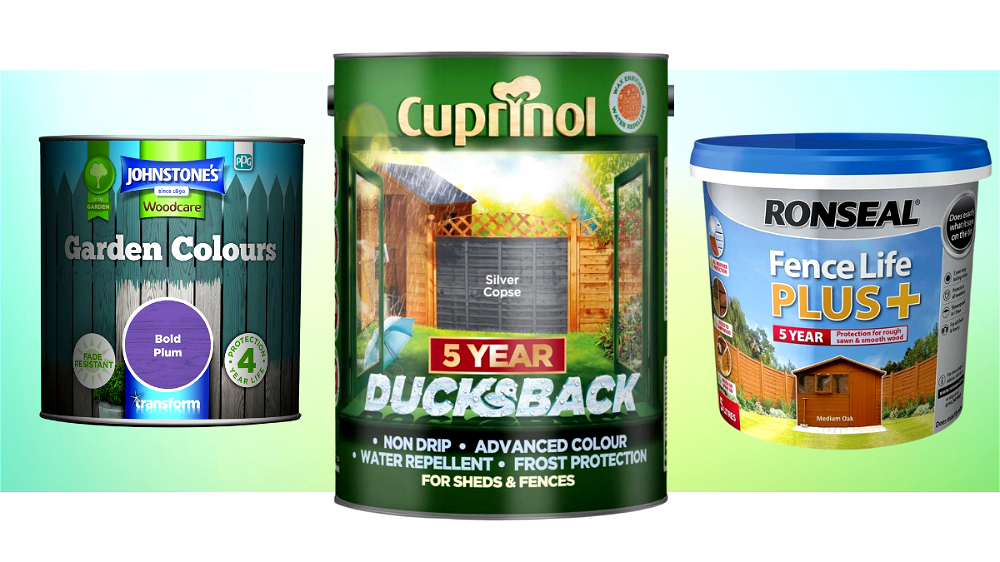
-
Johnstone's Garden Colours Fence Paint
-
Ronseal Fence Life Plus Paint
-
Cuprinol Ducksback Silver Copse Fence Paint
-
Ronseal One Coat Fence Life
-
Cuprinol Less Mess Fence Care
-
Sadolin Shed & Fence Woodstain
-
Ronseal One Coat Life - Quick Dry Fence Paint
-
King of Paints Slate Grey Fence Paint
Reviews
- Dry to touch in two hours
- Quite thick viscosity and isn't prone to running or dripping
- Can be used to paint garden furniture as well as fences, resulting in a lot of creative possibilities
- Water-based paint means less odour
- Works on other materials, not just wood, like stone and plastic (although several coats may be required)
- Can appear streaky whilst being applied, although often evens out as it dries
- May require more than one coat, especially to achieve maximum vibrancy from the colour
- Due to thick viscosity, may use more paint than anticipated
Who said that fences and sheds had to be standard colours like brown or green? If you are looking for something a bit jazzier for your garden, the ‘Bold Plum’ option in the Johnstone’s Garden Colours makes a striking impact. It’s the best fence paint to make a colourful statement in the garden.
From plum, to lime, to berry, there are a lot of loud colour options available in this Johnstone’s Garden Colours range, as well as some more neutral tones like ‘Vintage Rose’ and ‘Natural Vanilla’.
This fence paint is not limited to use on rough-sawn timber and can be used on anything from garden fences to playhouses, and even wooden garden furniture. Everything from dining sets to benches can be made a lot more colourful using Johnstone’s Garden Colours, making it possible to create some really decorative and unique pieces.
A 1 L tin provides enough fence paint to cover approximately 12 m² (approximately five fence panels), so it’s one of the more expensive options featured on this list, but the coverage is good and it’s easy to apply, often only requiring one coat.
Johnstone’s Garden Colours is quite thick, with a ‘waxy’ texture, and may need at least two coats for full coverage. It can be a little difficult to spread, although any streaks tend to even out as it dries.
Whilst perhaps not the most ideal option for a large garden fence, due to the price and the fact that it’s best applied with a brush, this is the best fence paint for creating colourful feature-areas in the garden. The Bold Plum colour comes out as a bright, eye-catching purple that works for both furniture as well as fences.
Did you find this review helpful?
- Dries in four hours so you can apply another coat the same day
- Can be applied to either dry or damp wood
- Good for areas of extreme weather - protects against rain, frost and snow
- Can be used on both rough-sawn and smooth-planed wood
- Good UV weather protection
- Consistency is very thin so it’s difficult to apply without drips
- Smooth planed wood will require three coats which can be time consuming
Ronseal Fence Life Plus Paint is the best fence paint if you want a versatile option. Unlike the Ronseal One Coat Life fence paint (also featured on this page), this Ronseal Fence Life Plus paint can be applied to both rough-sawn wood as well as smooth-planed timber. It can also be applied to damp wood and dries reasonably quickly.
This Ronseal Fence Life paint is available in nine colours, though I’ve chosen to focus on the classic ‘Medium Oak’ finish – a traditional and timeless hue for the garden. The other colours are Black Oak, Cornflower, Dark Oak, Forest Green, Harvest Gold, Red Cedar, Sage and Willow. This fence paint range is one of Ronseal’s most colourful options and can be used to add some extra personality to your garden fence, as well as protect wood from the elements.
On that note, let’s take a look at the durability. This fence paint offers good weather protection from rain, snow, frost and UV damage, with the colour lasting for around five years.
The paint is also easy to apply. It dries fully in four hours and is showerproof in just one hour. It can be either brushed or sprayed on, although it’s worth noting that the paint is pretty thin and therefore drips are likely.
Another benefit of this fence paint is that it can be applied on either damp or dry wood, although it still needs to be applied on a dry day. This means that even if there have been a few days of rain, you can still paint your fence or shed once the sky clears.
In terms of application, this fence paint will take slightly longer to apply than some others due to the number of coats required. For rough timber you’ll need to apply two coats, while smooth planed wood will need three coats.
Finally, the coverage: one litre of this paint can cover up to 6m², so the 5L pot should contain enough paint to cover 30m² – approximately six shed panels (depending on how many coats you have to do).
Overall, this is the best fence paint if you’re looking for something versatile and easy to apply. It’s a particularly tough paint from Ronseal, made even more flexible by the fact that it can be applied to damp surfaces as well as both rough-sawn and smooth-planed wood.
Did you find this review helpful?
- Smooth and easy to apply
- Relatively thick so doesn’t produce a lot of mess
- Low odour
- In some cases, one coat is all that's required
- Water-based paint with low VOCs
- Older wood may require a few coats
- Not the most durable - one coat may not withstand heavy onslaught from the elements
The Cuprinol Ducksback Fence Paint is the best fence paint for easy application. It’s thick and smooth, making it easy to apply without mess. Cuprinol Ducksback is suitable for smooth or rough-sawn wood and can therefore be used on fences, garden sheds and furniture. It offers long-lasting protection against the elements thanks to the wax-enriched formula.
In terms of colour, this paint is available in nine different hues. I’ve chosen to focus this review on the ‘Silver’ Copse finish which is a matt, dark grey fence paint – it results in a modern, contemporary look.
In terms of application, the thick viscosity is what makes Cuprinol Ducksback easy to apply without mess. It can be applied using either a paint sprayer or a brush (although a brush is recommended due to the waxy consistency).
Some fences may only require one coat, but it’s more common to need two or three. The drying time between coats is around 2 – 4 hours and the overall drying time should no more than 5 hours in total.
The coverage for Cuprinol Ducksback is cited as 6 m² per litre which means one tin contains enough paint to cover approximately six fence panels.
Overall, this paint is good quality and is the best fence paint for easy application. When applying with a brush it doesn’t produce a lot of drips, although older wood may need a good few coats. The Silver Copse colour is great for creating an attractive, modern finish.
Did you find this review helpful?
- Only one coat is required on rough-sawn wood which makes painting jobs quicker to finish
- Non-toxic so can be used in areas with pets and children
- Dries quickly and is touch-dry in a few hours
- Adds colour whilst also protecting wood of sheds and fences
- One tin can cover around 6 standard fence panels
- Very thin and runny so the floor needs to be protected from drips
- Wood needs to be cleaned first to allow the paint to soak in
When it comes to the infamous job of painting fences and sheds, there are a few brand names that often come to mind. Ronseal is one of them, and their One Coat Fence Life – Dark Oak treatment is quite a popular choice. This Ronseal fence paint offers good coverage, is easy to apply and is reasonably priced. Therefore, it’s the best fence paint in terms of value for money.
One 5 L tin of One Coat Fence Life covers a large area. According to Ronseal, each litre of paint can cover 6 m² per coat. This means that a 5 L container holds enough product to cover 30 m².
There are several colours in the Ronseal Fence Life range including: Gold, Medium Oak, and Dark Oak. I’m focusing this review on the Dark Oak colour which dries as a dark chocolate and has a matt finish. It’s a rich, warm colour to use in the garden. One coat should be sufficient on most rough-sawn timber if painted over a lighter colour.
The viscosity is of this fence paint is quite thin, and it does have a tendency to run when applied. This is both a blessing and a curse; the paint can be applied with a sprayer, and is quick to put on regardless of what technique is used, but it can get messy.
A cloth may be needed on standby to catch any drips, and any fence paint that gets onto the floor will need to be quickly washed off. Otherwise, the stain can become permanent.
Overall, this is one of the best fence paints in terms of value; one tin of One Coat Fence Life can cover a large area and, given that most garden timber should only require one coat, it’s not too time consuming to apply either. The main downside is the consistency, as you do need to watch out for drips.
Did you find this review helpful?
- Creates limited mess during application as it doesn't drip a lot
- Can be applied using either a paint brush or paint sprayer
- In most cases just one coat is needed
- Safe to use in areas with pets and plants
- Any paint that does get somewhere it shouldn't can be washed off with water and soap
- Needs to be substantially diluted to make it suitable for painting with a spray gun
- May need to apply two coats if painting over a darker colour
Although all fence paints will drip a little, this Cuprinol Less Mess Fence Care does a decent job of living up to its ‘Less Mess’ name. The formula is neither excessively thick nor thin, and it doesn’t run too much or create a lot of drips.
It’s the best fence paint for keeping mess to a minimum, and can be applied with either a brush or a spray gun. Although it achieves good coverage most of the time with just one coat, there are some instances where two coats might be required. For example:
Cuprinol will likely need to be heavily diluted if used with a paint sprayer, so there is a possibility that another coat will be required in that case. Two coats might also be needed if painting over a darker colour, or applying the paint on fresh wood.
This fence paint is intended for use on rough-sawn timber, so it’s suitable for painting a lot of different exterior wood like wood stores, sheds and fences. However, it’s not recommended for smoother wood like garden furniture.
There’s 6 L of fence paint in one tin which is enough to cover approximately 10 fence panels, and it’s available in different colours like ‘Autumn Red’, ‘Rich Oak’ and ‘Rustic Brown’.
For the most part, the fence paint colour may look a little different to the swatch colour when first applied, but when dry it’s a better match; however, the ‘Autumn Red’ dries slightly more orange than you might expect.
Overall, this is a good paint for providing good coverage, and it’s one of the best fence paints for applying with a brush because it’s not too messy and has a manageable consistency. Any fence paint that does get somewhere it shouldn’t can be washed off using water and detergent.
Did you find this review helpful?
- Highly protective - offers good weather protection for several years
- Relatively thick formula that isn't prone to dripping
- Showerproof in around 30 minutes so can be applied without needing guarantee of a completely dry day
- Can be applied with a paint brush or by using a compressor and paint sprayer
- May require several coats to get full coverage
- Not the best value for money considering price and how much may need to be used
This Sadolin Shed and Fence Woodstain is the best fence paint if you’re looking for something that will freshen up the appearances of fences whilst also offering weather protection for several years.
This fence paint is wax enriched, which helps with repelling water from the surface, and it offers an all-weather barrier to protect exterior wood. The ‘Ebony Wood’ is perfect for anyone wishing to create dark, striking fences.
It’s also one of the best fence paints to apply at any time of year, because it becomes showerproof within approximately 30 minutes of application. Therefore, even if you can’t rely on there being no drizzle during the whole day, you can still pop some of this paint on during a dry window.
Also, a further advantage of this fence paint is that it can be applied using a compressor and a spray gun (despite its relatively thick viscosity). This dramatically speeds up how long it takes to get the painting done.
There’s 5 L of fence paint in one tin, so in terms of value-for-money this Sadolin paint sits roughly on par with the Cuprinol fence paint, making it a mid-range option. However, the Sadolin paint may require more coats than the Cuprinol.
Overall, it’s one of the best fence paints if you’re looking for something that will offer a good amount of protection to timber and it shouldn’t need repainting for several years. It’s also a great option because of how quickly it dries. However, it’s not the cheapest option if you’re on a budget.
Did you find this review helpful?
- In most cases, only one coat is required
- Dramatically improves the appearance of fences
- Relatively thick consistency which helps prevent drips
- Easy to apply using either a paint sprayer or a paint brush
- Water-based paint makes cleaning brushes easier
- Very bright when initially painted on although the colour changes as it dries
- As the consistency is quite thick it can be difficult to mix
This One Coat Fence Life – Medium Oak by Ronseal has an elegant, rich colour. It’s the best fence paint if you’re after a traditional look and easy application. It can be used on both sheds and fences.
As the name suggests, in many instances you only need one coat of One Coat Fence Life. It’s designed for use on any rough sawn timber, including that which has been previously stained. This fence paint dries quickly, becoming showerproof in just one hour.
This Ronseal fence paint is extremely long lasting, retaining its colour for up to two years. When initially applied, the fence paint colour is fairly bright, although this softens as it dries. It not only adds a fresh lick of colour to wood, but it offers good weather protection as well.
Another great thing about this fence paint is that it’s relatively easy to apply. The thick consistency ensures mess is kept to a minimum, and it can be either sprayed or painted on. The coverage rate is fairly standard for fence paint, at 6 m² per litre. This means that the 5 L container holds enough product to cover approximately 30 m² (around six fence panels).
This fence paint should be applied on a dry day when temperatures are over 10°C. You’ll need to clean the wood first using a stiff brush to remove any dirt.
Although only one coat is required, if you’re covering a bright or very rich colour, you may wish to apply an extra coat of this Ronseal fence paint depending on personal preference.
Overall, this One Coat Fence Life is one of the best fence paints if you’re after a traditional look and easy application. It doesn’t produce much mess, and most garden timber should only require one coat.
Did you find this review helpful?
- Provides a good depth of colour even after just one coat
- Thick consistency so doesn’t drip
- In many cases, just one coat is required
- Water based so easy to clean brushes/spray gun after use
- Offers good weather protection
- Paint settles very quickly so needs a lot of mixing
- More expensive than others on the market
Made for decking, sheds and fences, this King of Paints Slate Grey Fence Paint is exceptionally easy to apply and produces a gorgeous, dark slate colour.
This fence paint is designed to offer long lasting protection to your fence – it contains algaecides and fungicides to fight off mildew and will also help prevent weather damage. As a result, this is the best fence paint for those living in exposed areas, helping protect the wooden fence from rain, frost and snow. It also has good resistance to sunlight, retaining its rich colour even after a long summer.
Onto the colour – this Slate Grey fence paint offers a contemporary, rich finish. It’s a deep colour and the paint applies well, so it often only needs one coat.
One of the reasons that this fence paint is so easy to apply is that it has a thick consistency. This means it doesn’t drip a lot during application, avoiding unnecessary mess. It can be applied using a roller, brush or paint sprayer and achieved good coverage with the paint spreading on well.
Overall, this is one of the best fence paints if you want a quality, premium option that will offer excellent protection. It’s a little more expensive than the other fence paints listed here, but it’s clear from online testimonials that it’s a thick, quality paint that gives good results.
Did you find this review helpful?
How to Choose The Best Fence Paint
The Benefits of Fence Paint
If you’ve been feeling like your garden needs a bit of jazzing up, painting your wooden fence can really bring it up a level.
You can choose from natural wood shades, with brown and red hues, or go for a pop of colour to really brighten up the garden.
Depending on the colour you choose, you can make a feature of fences with bold contrasting colours or blend them into the background to make your garden look bigger. A lot of fun and creativity can go into this task too!
And, of course, treating your fences regularly with a good fence paint will help protect them against the elements. Not only do most fence paints offer protection against the weather, they can also prevent mould and rotting and shield the wood from strong UV light that can cause the garden fence to dry out and crack.
READ NEXT: The Best Modern Garden Fence Ideas
Choosing the Right Colour
When it comes to fence paint, there are two directions you can go with colour. These are natural hues (like browns and greys) or shades which are more commonly found in the rainbow (reds, oranges, purples).
Personal preference of course plays a huge part in what colour paint you should choose. But there are a couple of things to bear in mind on top of that:
Choosing a Colour Based on Function
The best colour for your garden fence will depend on the effect you’re looking to achieve.
Here’s what colour paint to choose if you’re looking to:
- Make your plants stand out: choose dark colours, or contrasting colours. Dark colours like black or dark purple make the green of the foliage pop. The same effect is achieved, in a different way, by choosing pink or magenta shades. These colours are on the opposite side of green on the colour wheel and contrast with the greenery of plants to make them stand out. If you’re using dark colours for your garden fence, try to make sure there is plenty of foliage in front of them to stop the boundary from appearing too harsh.
- Make your garden look bigger: choose light shades or camouflage colours. Using light shades on the fences can help a garden feel bigger, especially if there are also light-coloured plants around the borders. Equally, you may choose to camouflage your fences, especially if there are a lot of plants in front of them already, by using greens or natural colours so that the borders blend in instead of stand out.
- Make a creative statement: choose any colour from the rainbow. You can use any bright colour to make a creative statement in the garden, and these paints can be applied in any number of ways. You could decorate fences with an ombre colour fade, contrast trellises, contrast fence posts, or paint one fence to make a statement area in the garden.
- Create a strong ‘theme’: choose a colour that matches your flowers or shed. For example, if you have a lot of purple flowers in the garden, painting the fence and/or shed in the same colour can create a cohesive and strong theme for the space.
- Create a modern, minimalist look: in recent years, ‘chalky’ shades have become popular to give a modern look. Grey fence paint creates a particularly minimalist finish, whilst chalky duck-egg blue or light green brings a touch of colourful modernity to the garden.
READ NEXT: Tips To Improve Your Fence Security
The Existing Colour of Your Fencing
Despite what reviews may say, or the colour description itself, it’s very likely that the colour you will end up with will depend on the existing colour of the timber. If you’re quite specific about how you want the final shade to look, you might want to buy a test pot before buying a large can.
Painting a lighter colour over a darker one will likely always result in some of the base colour showing through. Better results will be achieved with several coats of paint, but there’s always a risk that it won’t turn out quite as vibrant as expected.
Also remember that colours may also come out darker than expected, especially once dried, which can really change the look of a garden.
READ NEXT: Thing You Can Legally Put on Your Fence to Stop Burglars
Number of Coats Required
If you’re keen to save time, and you don’t want any nasty surprises, check out the reviews for information about how many coats your fence paint will need.
As a general rule, darker colour fence paints may be able to get away with one coat, depending on the original colour of the wooden fence. More vibrant colours are more likely to require a second coat (or maybe even a third).
The number of coats you need to apply also depends on the manufacture’s instructions for weatherproofing. For a lot of fence paint brands, one coat is enough to protect your fencing. However, do read the small print before making your choice – there are some paints that may require you to use two coats to fully protect the wood.
READ NEXT: How High Can a Garden Fence Be?
Fence Paint FAQs
Most fence paints will state roughly how much area one pot will cover. Compare this with the area that you’re looking to paint, and use this to work out how much paint to buy.
Bear in mind that it’s very easy to use more fence paint than the manufacturer intends: sometimes your application technique may be different to the one they used, or some paint may drip. It’s always a good idea to buy a bit more paint than you think, otherwise you may run into difficulty partway through a job!
Occasionally, paint companies have been known to change their fence paint formula, which can slightly alter the colour of the paint. For this reason it’s generally better to buy all of the paint that you’ll need in one go, instead of coming back to buy the second lot later on, just in case.
Both water-based paint and solvent-based paint can be used on exterior surfaces – as long as the specific paint products states that it’s suitable for this purpose. The paint tin should state whether it is water based or oil/solvent based.
The paint dries as either the water or solvent dissolves, and both types of paint have their advantages and disadvantages.
Water-Based Paint
Some people choose to use water-based fence paint for the following reasons:
- It is very quick to get to ‘touch dry’.
- It doesn’t smell as strongly as solvent-based paint.
- It’s easy to clean any drips from surrounding surfaces using just water and detergent.
- Contain less VOCs (volatile organic compounds) that solvent-based paints. Extended exposure to VOCs can cause health problems, and VOCs are also considered bad for the environment – they can contribute to the increase of ground-level ozone (smog) which can lead to global warming.
However, there are some disadvantages to using water-based paint too. It can chip easier than solvent-based paint and have less of a sheen overall. It can also be necessary to apply more coats to hide brush strokes; the quick-drying nature of water-based paints can make it less forgiving in this way. Water-based paint will also take a long time, up to several weeks, to harden completely.
Solvent-Based Paint
The benefits of using solvent-based fence paint are:
- It can be easier to work with as it doesn’t dry as quickly. This makes it easier to hide brush strokes.
- Dries much faster, to a hard finish, than water-based paint (although is slower to be ‘touch dry’).
- It soaks in to the wood as opposed to sitting on the surface, which can make for a longer-lasting finish.
As with water-based paint, there are also disadvantages to using solvent-based paint. Primarily, lighter colours can yellow over time and it smells extremely strongly. It’s also harder to clean any areas where paint has dripped, as well as the paint brushes, without using chemicals like white spirit. Also, a lot of solvent-based fence paints use VOCs (see above) which are considered bad for the environment.
The final appearance of your fence will depend on preparation as well as the paint you choose.
- Always clean off dirt, mud and mould before fence painting. If your fence is mouldy, then consider applying a fungicidal wash to kill mould and algae before going anywhere near a paint brush. Painting over mould and moss will only result in the paint not adhering well to the wood.
- You can either paint fences with a brush or use a fence sprayer. If you have a lot of fencing, a spray gun can save a lot of time. Most fence paints and stains can be used with paint sprayers, so you don’t normally have to buy a specific sprayable product. However, it’s worth double checking that using a paint sprayer is possible before purchasing a specific product, even by contacting the manufacturer if necessary. Some paints may need to be diluted first before they can be used in a spray gun, which may affect their quality or how many coats are required.
- If you only have a small area to cover, then simply invest in a good quality, nylon bristle paint brush. Some paints drip less than others, making them easier to apply with a brush – checking reviews online can give a good indication of which paints are easier to work with.
- When fence painting with a brush, you should work with the direction of the wood grain. If painting with a spray gun, you should work in sections, moving the paint sprayer left to right over the section whilst working either top to bottom or bottom to top.
- After painting, wash all brushes and paint sprayers thoroughly with warm water. If using a solvent-based paint, you may need to wash brushes in white spirit to remove the paint.
- Always dispose of leftover paint responsibly. Your local council will have details of where you can dispose of paints.



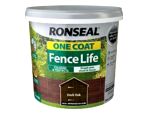
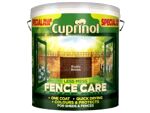
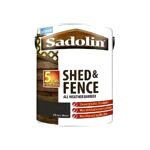
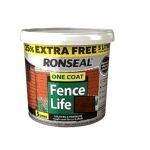
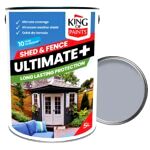
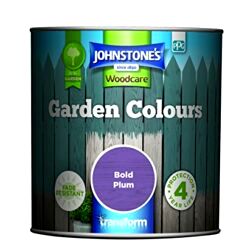
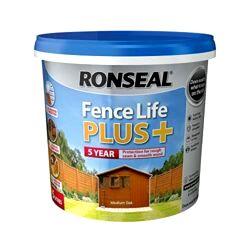
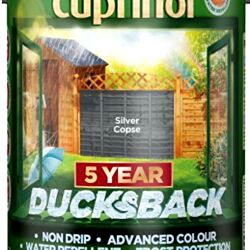
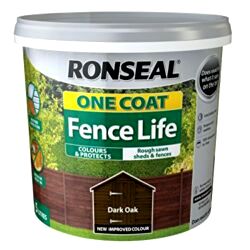

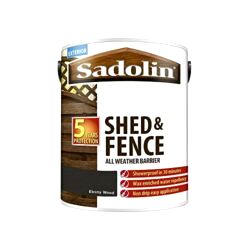

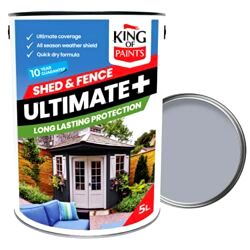

Share